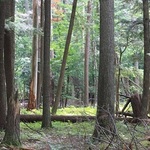
fs.fed.us – 22-02-2020
Forests in the United States sequester 5 to 10 percent of the Nation’s carbon emissions each year.
Forest Service researchers working with the USDA Office of the Chief Economist estimate that carbon sequestration by U.S. forests (private and public) will be worth over $100 billion over the next 35 years, making carbon sequestration one of the most valuable ecosystem services that forests provide. The most cost-effective ways to boost carbon sequestration are to invest in the reforestation of chronically understocked public lands in the western United States and to offer afforestation incentives to rural landowners in the eastern United States.
Choosing policy alternatives for increasing carbon sequestration in U.S. forests will depend on the benefits of various sequestration strategies, and research developed by USDA Forest Service scientists delivers methods for evaluating those benefits. Scientists used Forest Service Forest Inventory and Analysis (FIA) data to project carbon sequestration in the coterminous 48 states in a baseline scenario and three policy scenarios for 2015-2050. Alternatives included: 1) a land-use policy to reduce deforestation from development; 2) an afforestation policy targeting rural landowners in the eastern United States and a reforestation policy targeting understocked federal forest lands in the western United States; and 3) a policy reducing the area of stand-replacing wildfires. Next, scientists used estimates of the social cost of carbon to estimate the present value of carbon sequestration. Finally, the gains in the present value of carbon benefits associated with each policy were computed. Results suggest that, under the baseline scenario, the present value of sequestration in U.S. forests through 2050 is $125.5 to $806.7 billion, depending on the discount rate. Changes in policy to boost sequestration through afforestation and reforestation would provide the greatest marginal increase in carbon benefits ($21.4 to $147.1 billion). Rough estimates of the afforestation subsidy and regeneration costs necessary to implement this policy suggest that total policy costs would be a fraction of the sequestration benefit. Future analyses could evaluate additional policy costs, as well as costs and benefits of affected ecosystem services such as water quality, wildlife habitat, and biodiversity.



